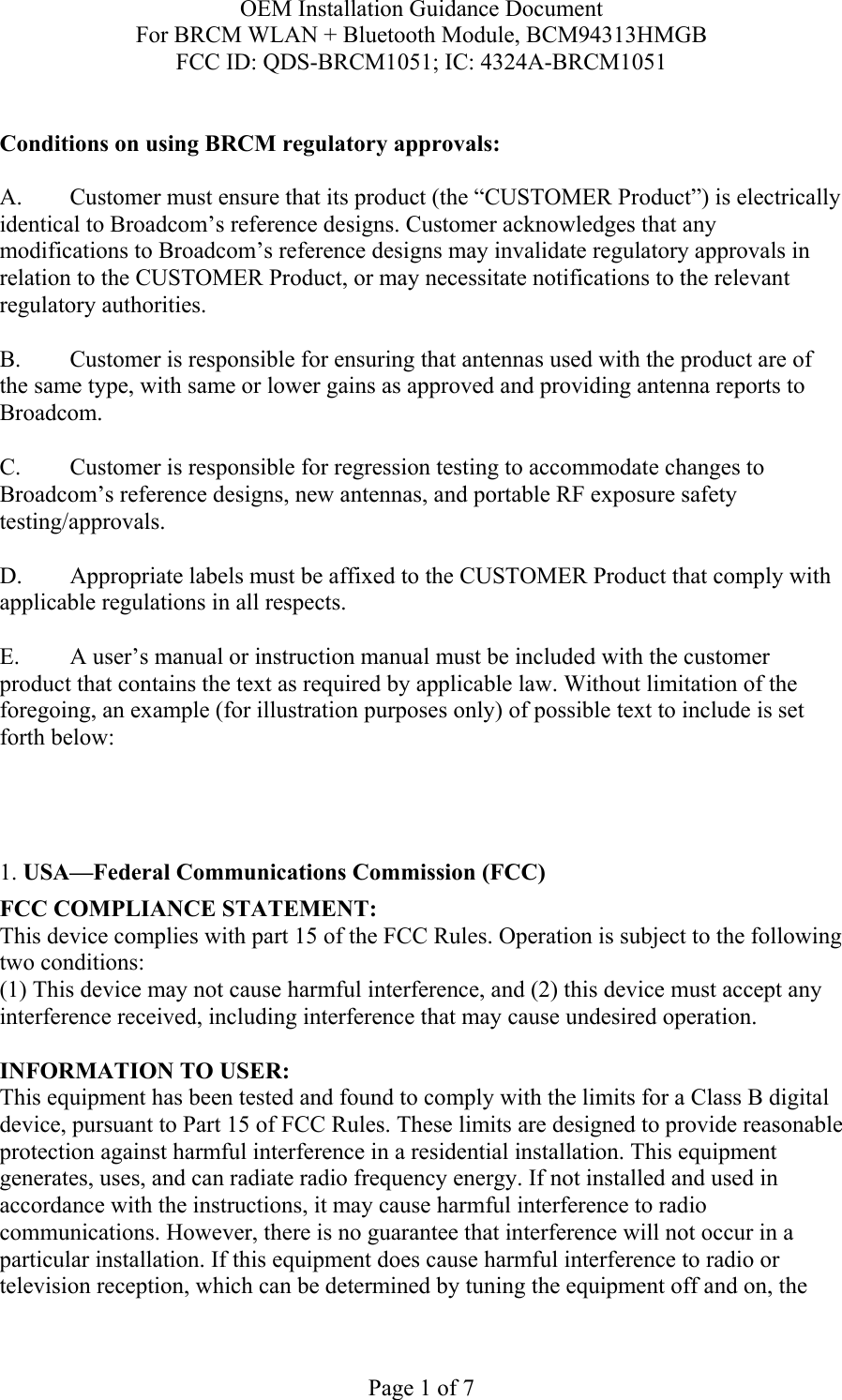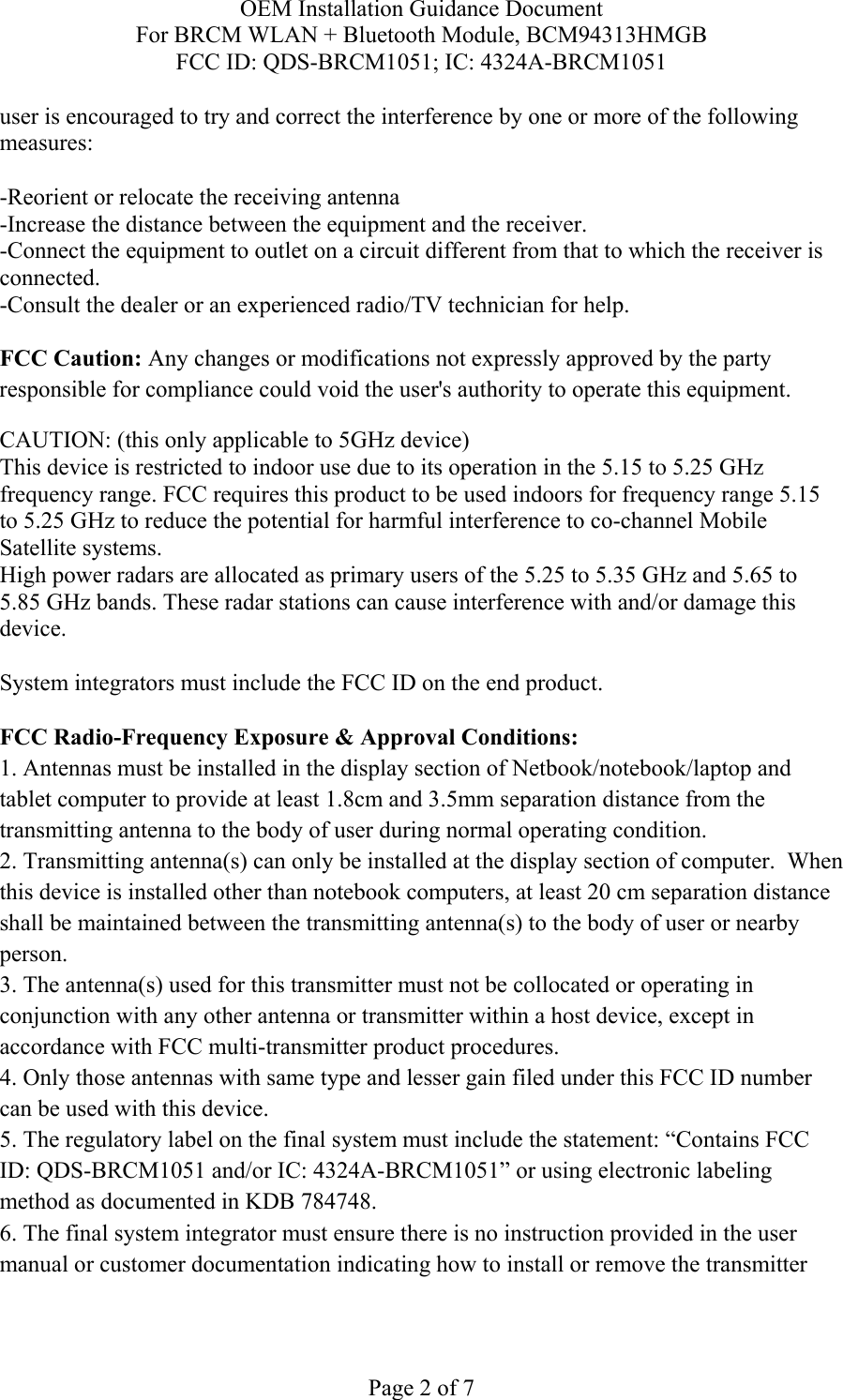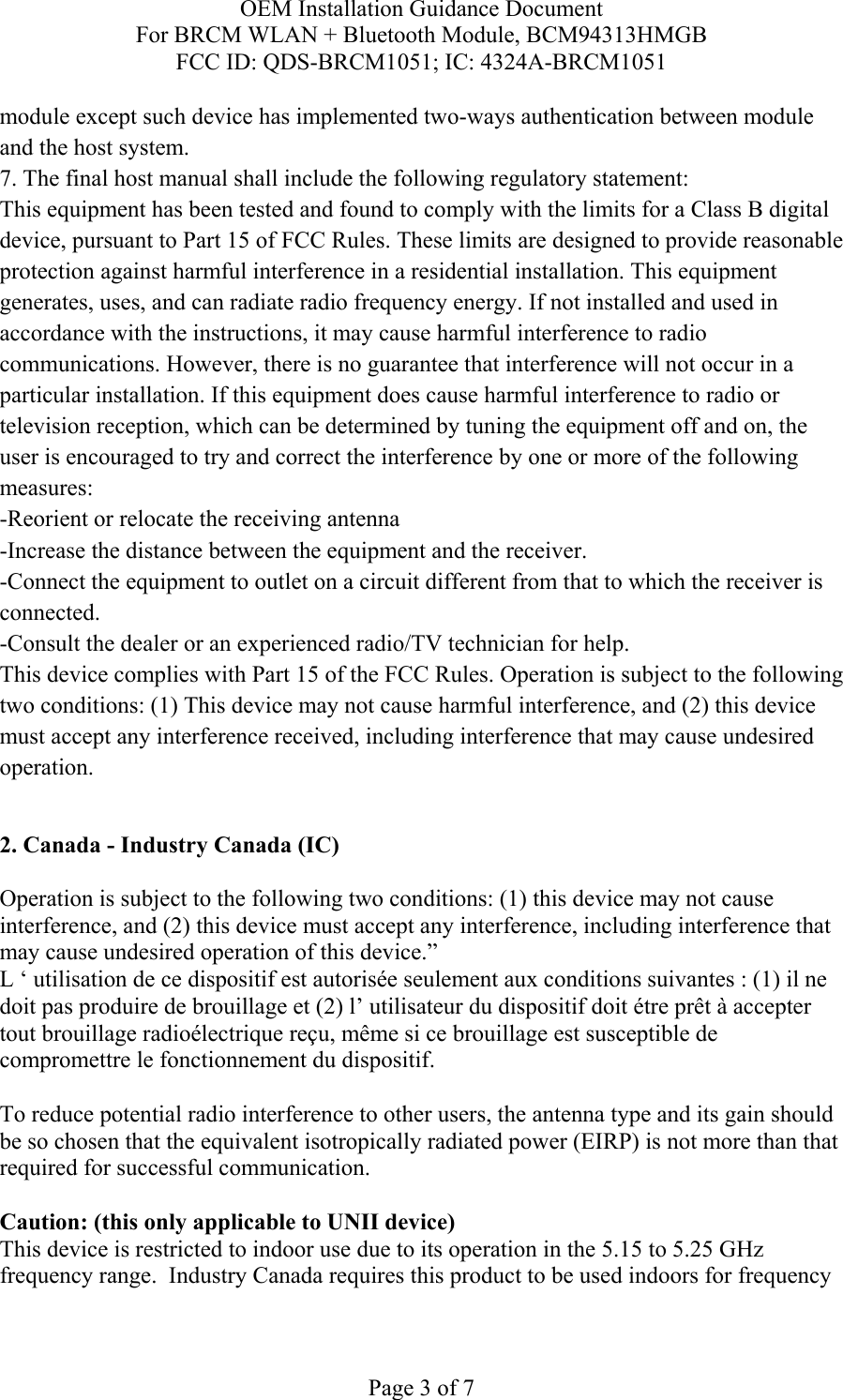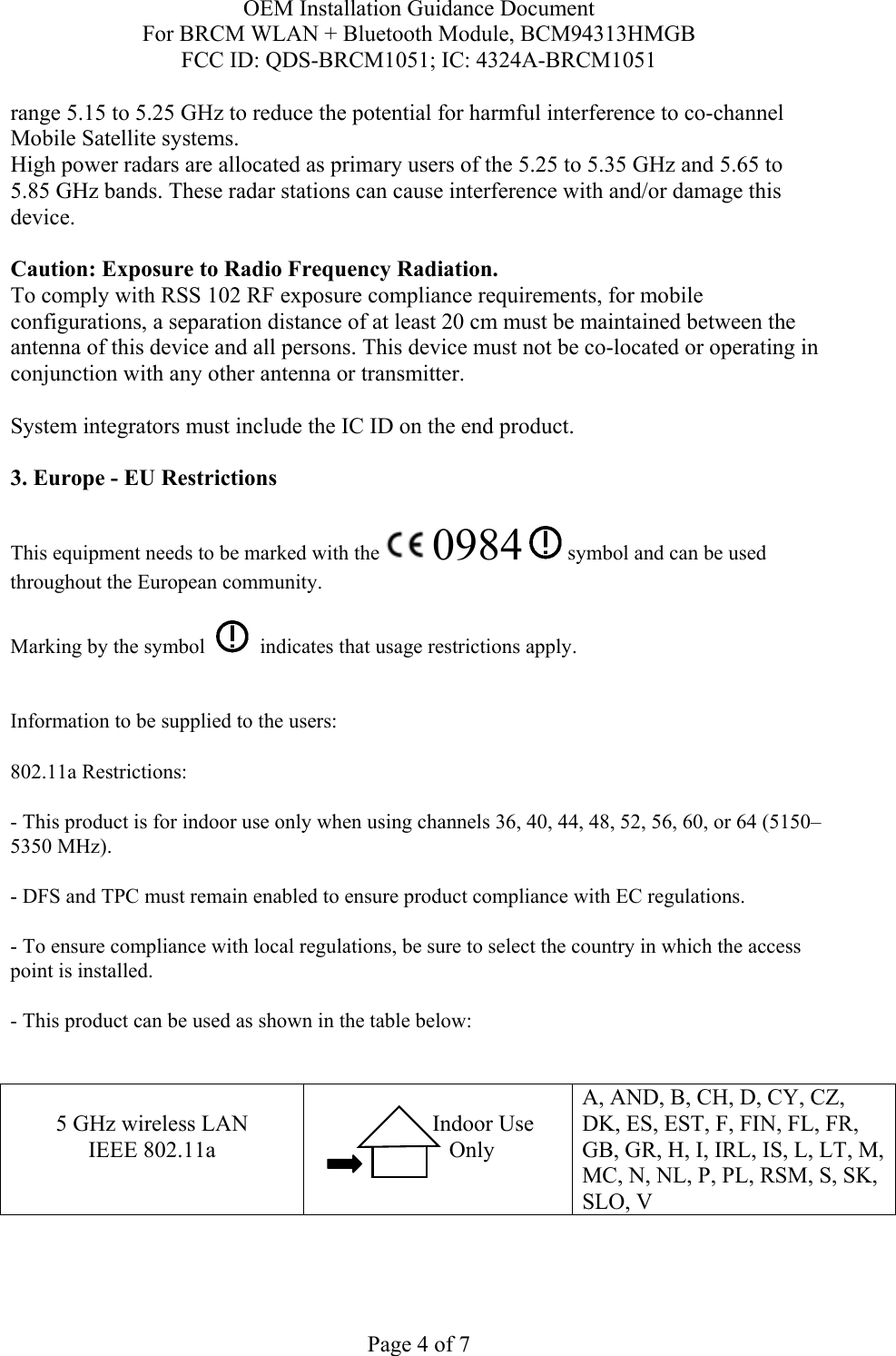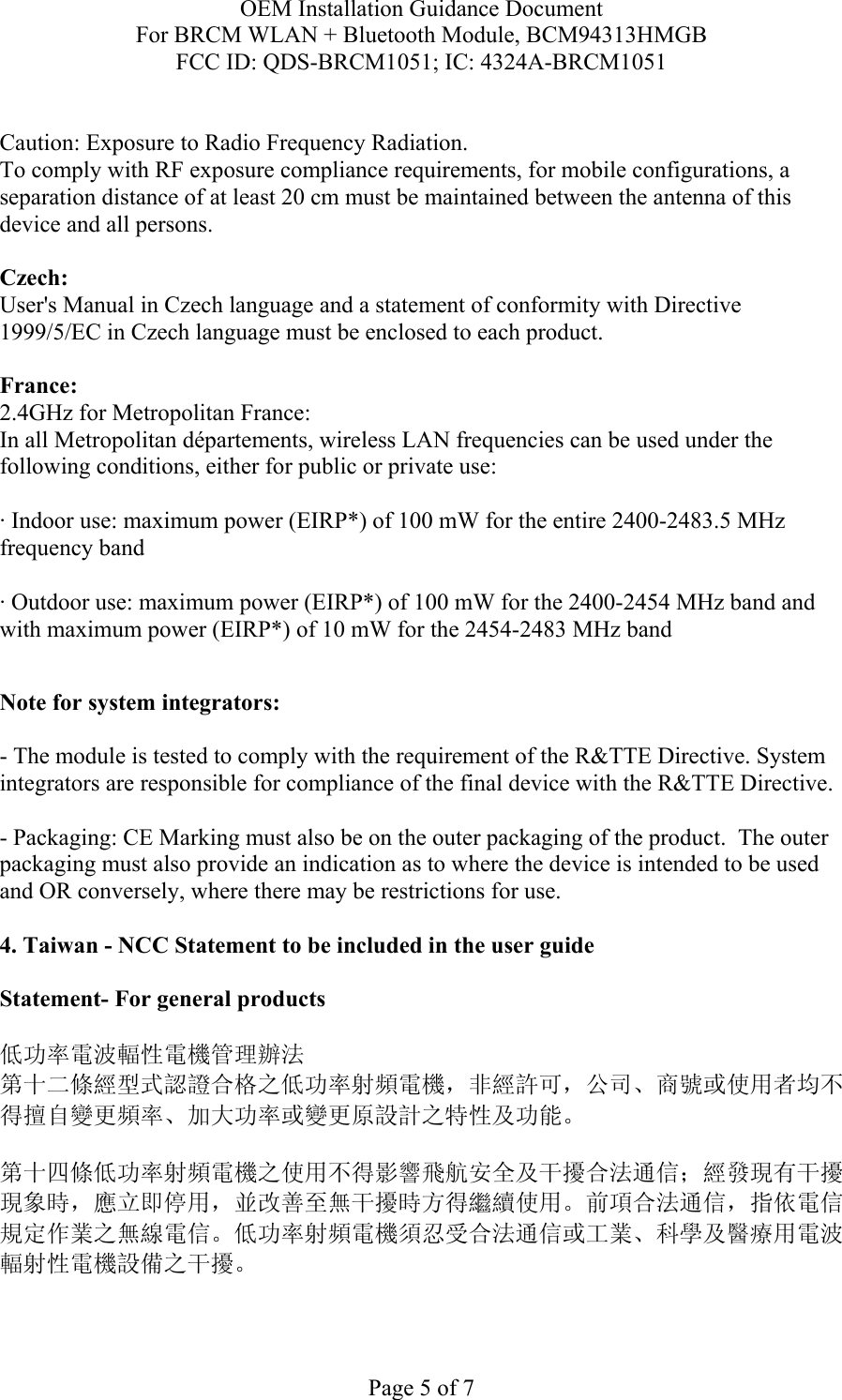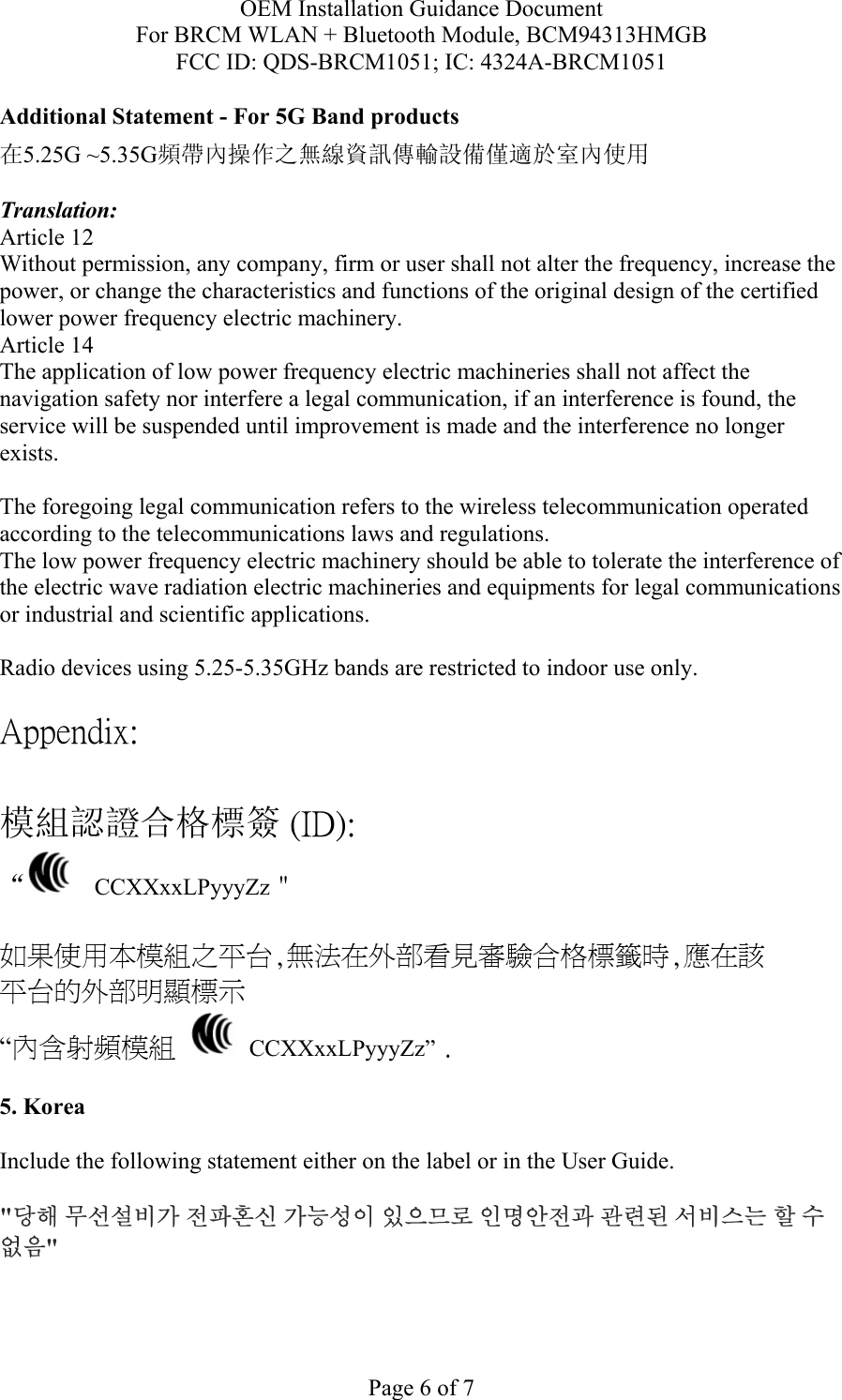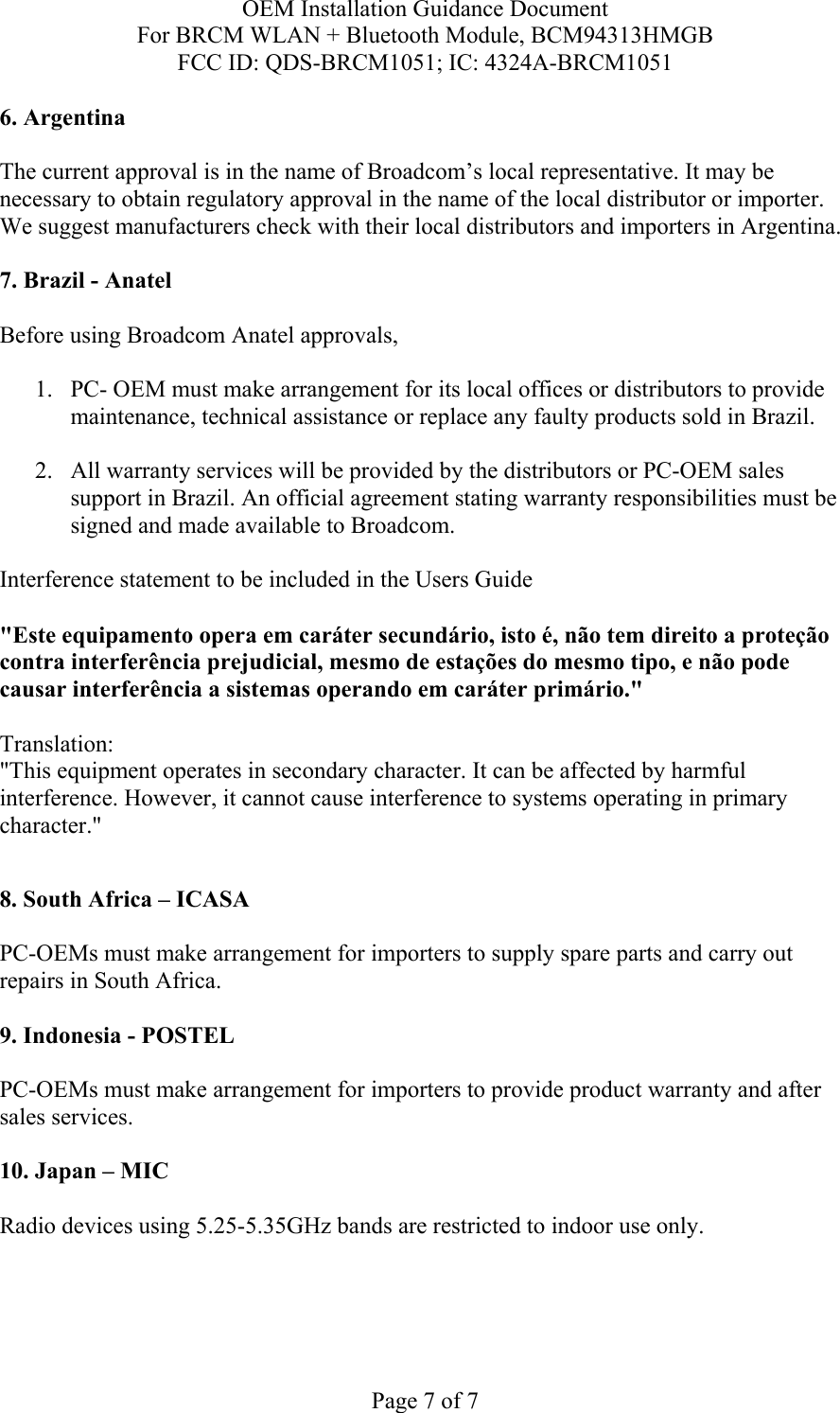Dynabook UPA3829WB 802.11g/Draft 802.11n WLAN + BT PCI-E Minicard User Manual Installation Guide
Toshiba Corporation 802.11g/Draft 802.11n WLAN + BT PCI-E Minicard Installation Guide
Dynabook >
Contents
- 1. Installation Guide
- 2. User Manual
Installation Guide
